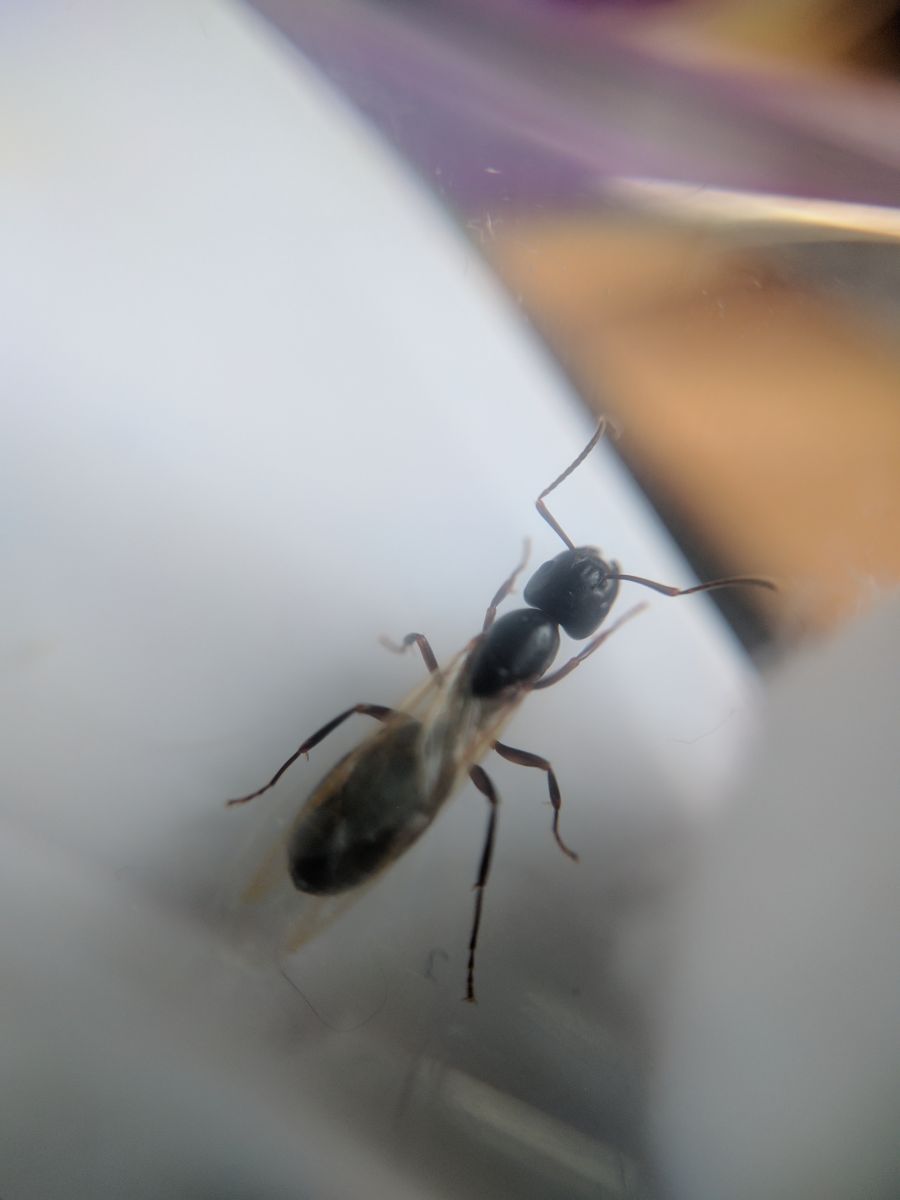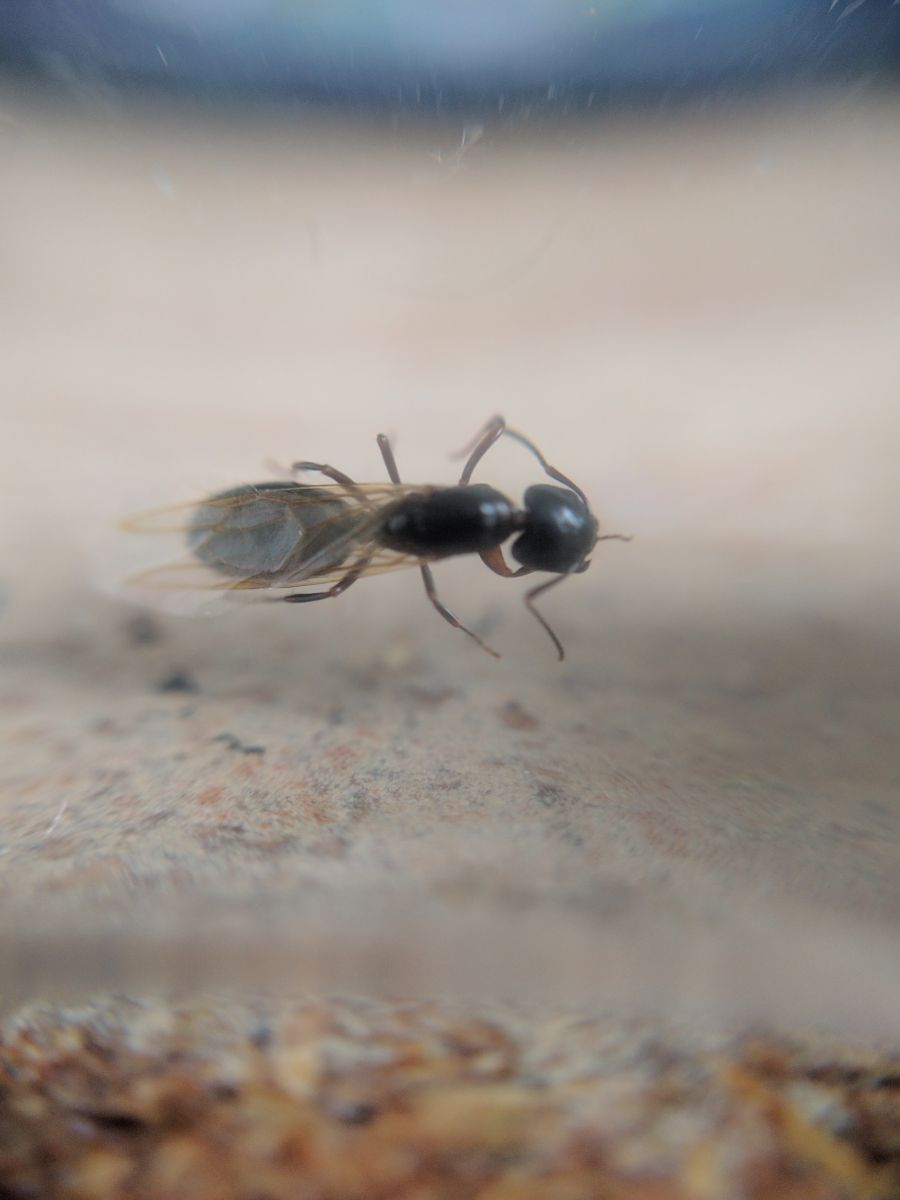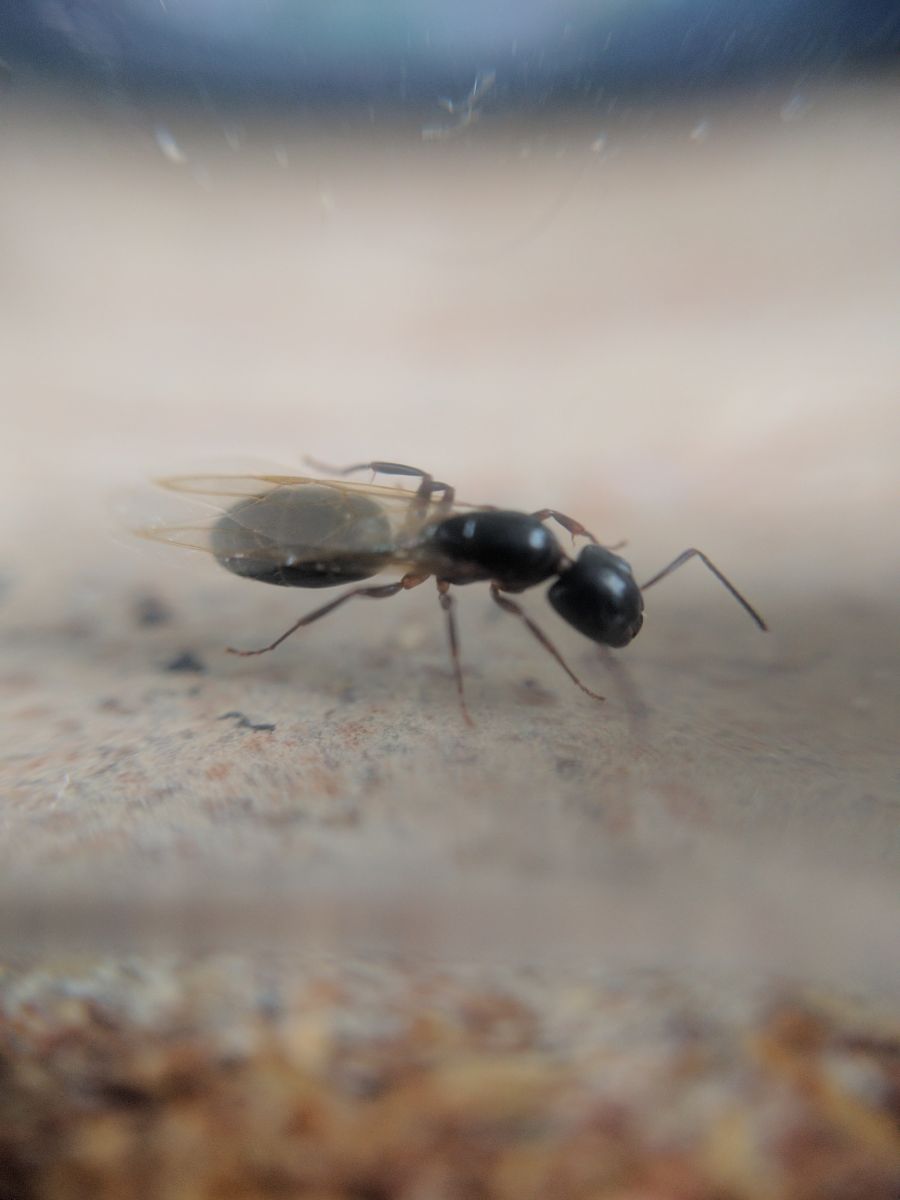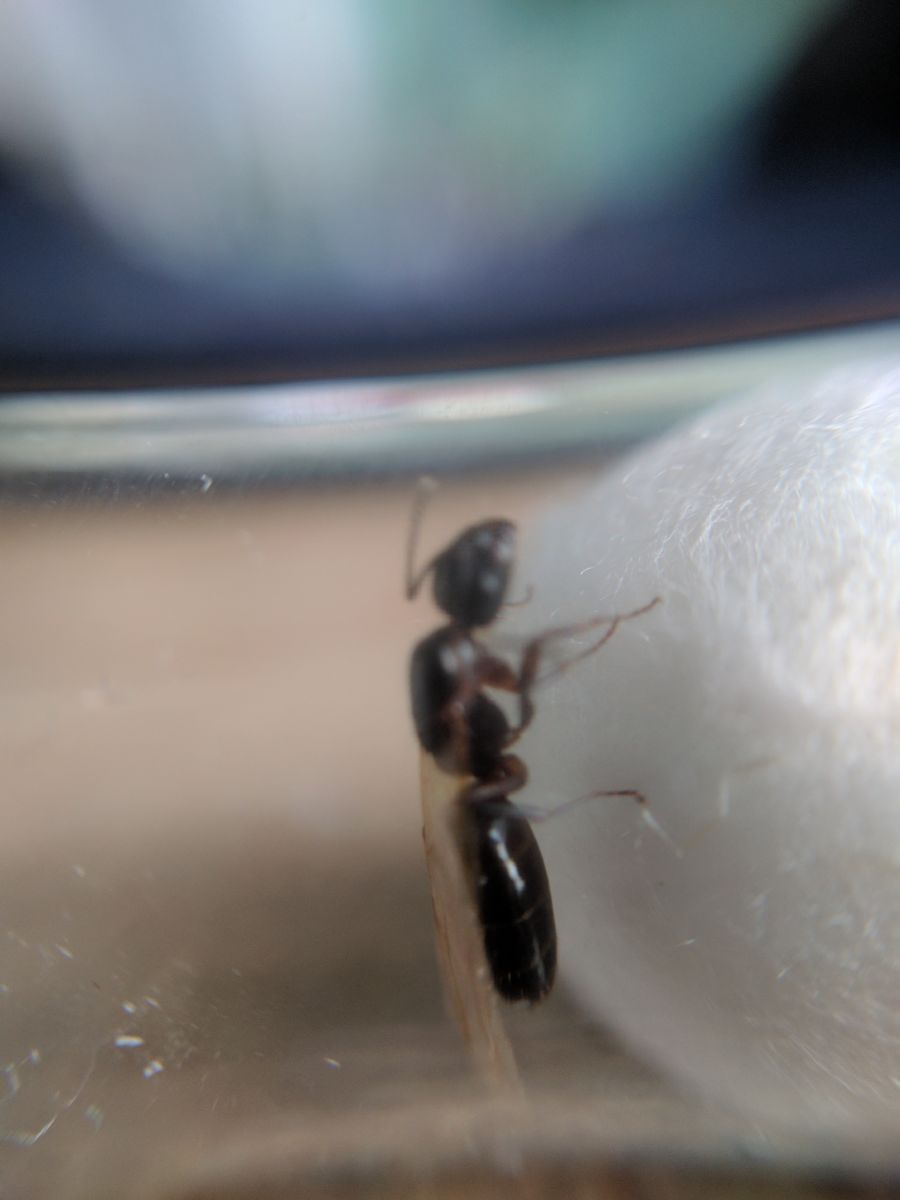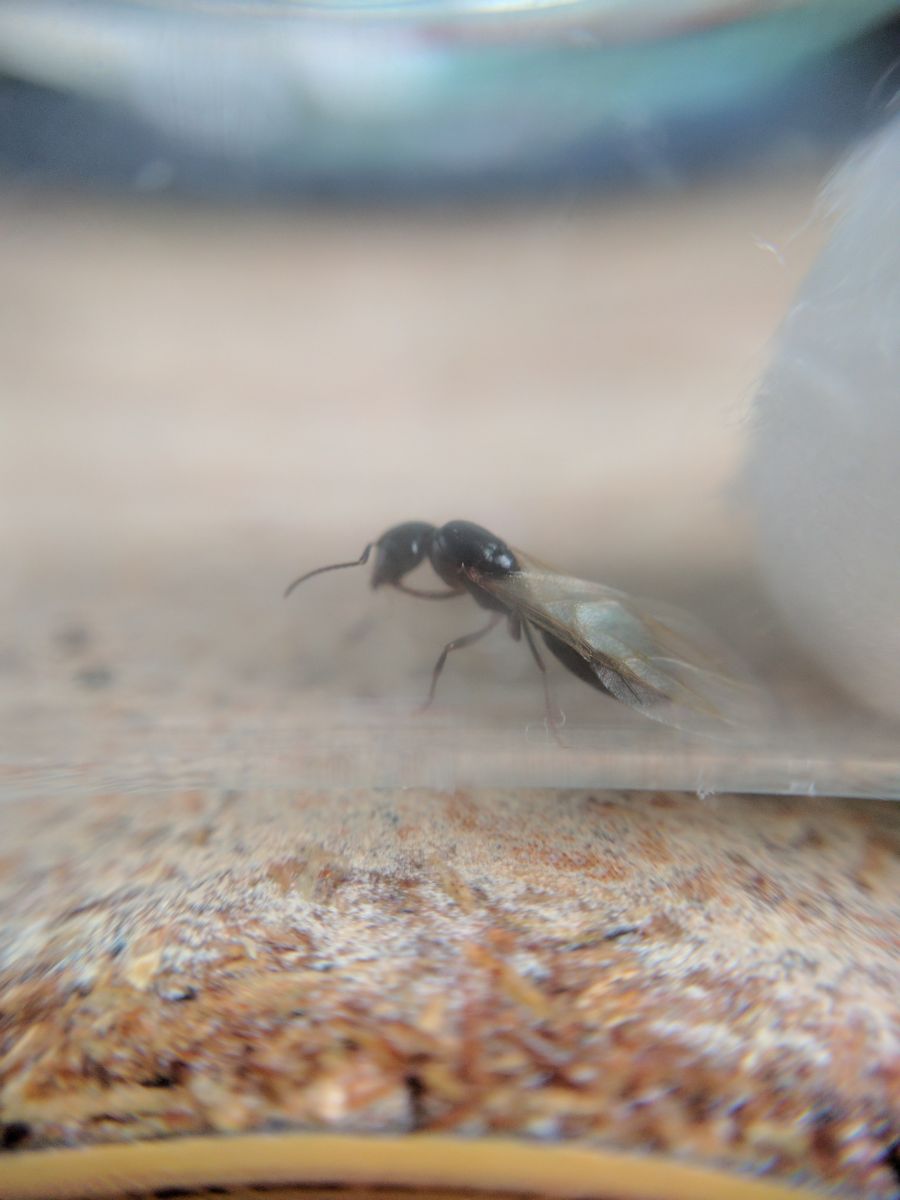1. Randolph MA
2.4/16/17
3. Flower bed
4. ~9-10 mm
5. Caramel-colored legs, otherwise black throughout. Underside of gaster with some caramel coloration
6. 1 petiole node, smoothly convex mesosoma. Looks like a Camponotus sp.
7. Fidgety behavior
8. No nest found
